Building Mid-Market Private Companies Using People Puzzle Gap Analysis with Kathleen Quinn Votaw


Businesses will never thrive when there are no dynamic teams involved. The Founder and CEO of TalenTrust, Kathleen Quinn Votaw, shows us how they help improve the middle market, privately held companies that want to build a business through their People Puzzle Gap Analysis. She goes over how they train employees individually or in teams to be who they are and show what they stand for. Kathleen also talks about what her book, Solve the People Puzzle, adheres to with regards to hiring the right people, and reveals one of the things that can bring the kiss of death to any company.
—
Building Mid-Market Private Companies Using People Puzzle Gap Analysis with Kathleen Quinn Votaw
We’re incredibly fortunate. We have Kathleen Quinn Votaw. She is the Founder and CEO of TalenTrust. She is a leader in helping companies find, keep and grow great people. She’s also the author of Solve the People Puzzle: How High-Growth Companies Attract and Retain Top Talent. She’s been recognized by the Colorado Women’s Chamber of Commerce Top 25 Most Powerful Women in Business, back-to-back Inc. 5000 Fastest-Growing Private Companies honoree. She’s Cobiz Magazine’s Top 100 Women on Companies six years in a row. Kathleen, thank you so much for taking time out of your busy day.
Thank you so much.
Tell us a little bit about your business and who you serve.
TalenTrust was established in 2003, and we serve the middle market. Business owners and business leaders in the middle market and Fortune 500 companies who want to find, keep and grow great people. It’s that simple. We work on culture and we work on recruitment to make sure that they can grow. That’s my mission in life. Making sure small businesses, middle-market businesses can grow.
As a business owner, I think about the statement. There’s a challenge with many of the business owners. They get to a certain point and then they go, “I have to add key talent. I don’t know if I need a chief of staff. I don’t know if a chief operating officer, I don’t know what I need.” They go, “I’m good at running my company,” and then they have to start hiring because they’re growing.
It happens all the time and we get to a point about where we need to bring in people who compliment who we are. In privately held businesses, we can’t do it all. You get to a certain point on your journey where you have to look at other people being successful on your behalf. Either you’re going to have a lifestyle company or you’re going to have a middle market company. We work with those middle market, privately held companies that want to build a business. The owner often finds themselves in a place where how can they replace themselves so they can go on and continue to grow the company. Whether it be sales, marketing operations, finance. We often run into people who don’t know how to or when to bring in the next best athlete, next best employee to get to the next level of growth.
I think about some of the companies, you’ll talk to them and they’re bursting at the seams. The business owner’s hair is on fire and they’re going next step. I’m that business owner, my hair’s on fire. We’re growing like mad. I go, “I’ve got to do something or I’m going to die in place.” What does that conversation look like when I as the business owner reach out to you for help and trying to determine the path forward?
It often starts with, “Kathleen, something’s wrong and I don’t know what it is.” It’s because something’s not working. You get to a juncture where you understand that your culture is suffering, broken or not established. You don’t have the right people driving sales, operations, human resources. The owner is up at [2:00] in the morning, scratching his or her head going, “What’s going on? I’ve got a mission and vision. I’m trying to get somewhere, but I can’t get the troops motivated to move forward.” What we do first is we do a gap analysis. We call it our people puzzle gap analysis. We do our people puzzle gap analysis to diagnose what’s going on. You’re a business owner, I’m a business owner, your audiences are business owners. You’re not doing everything wrong, so let’s diagnose it.
You go to the doctor, you’re probably relatively healthy, but maybe you need to take vitamin D. Let’s make sure, do we need to give you vitamin D, vitamin C or B12? Let’s figure out what you need. Sometimes it’s not a person. Sometimes it’s looking at your culture and looking inside your organization to the talent you actually have. Harvard Business Review wrote an article on your recruitment is all wrong and I agree with them. For most middle market core and upper middle market and Fortune 500 companies, their recruitment is all wrong. They’re looking outside almost 79% of the time and they need to be looking inside. Is your next best hire, Joe, who’s sitting next to you. Between the end of World War II and 1970, most of the hires were promotions. People retrained, motivated, deployed and taught. We trained people on how to be who they are. There’s an appetite that we’re going to go outside the company and we’re going to hire somebody going to have the next best idea. Only 30% of our people are getting promoted or trained.
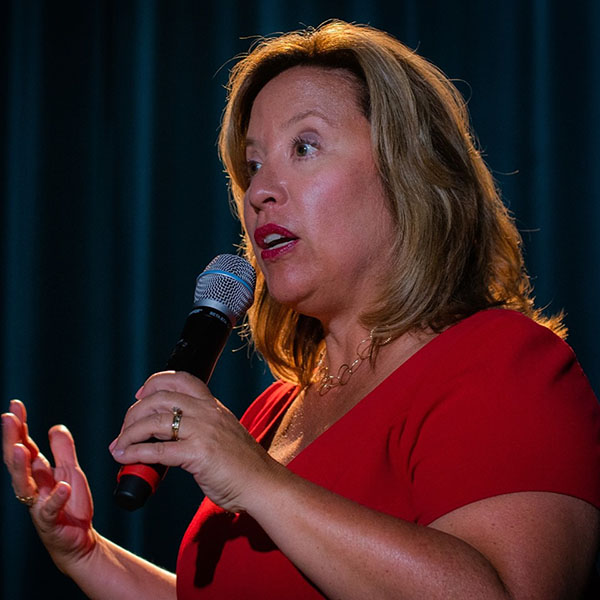
You’re on a hamster wheel. People are leaving to get promoted.
People hate me when I say this statistic, but 76% of your people are either open to or actively engaged in another discussion with somebody else. They’re actively leaving you. Not to be mean but they’re looking for advancement. They’re looking for knowledge, they’re looking to be trained and if you’re not giving it to them, who’s going to?
What strikes me is, let’s say I’m acquiring middle market companies and I look at your company to go, “What’s your turnover key personnel look like?” You wake up and go, “We got about three-quarters of our people leave on a regular basis.” It has to affect the value of the business.
It affects the valuation because in most companies, unless it’s an artificial intelligence company, super-duper product or engineering process, you’re buying people and you’re buying their relationships with other people. Retention is key, but only positive retention. I’m not a supporter of retention for retention sake because sometimes it’s time to go. The average life cycle of a Millennial and Gen Z, Gen Zs aren’t quite working, some a little bit, but Millennials is about 2.4 years. It’s the same statistic at the executive level.
I think about the transmission of culture within a business. If you’ve got that kind of turnover, how in the world do you preserve the culture of the company?
It’s very hard to preserve the culture when you’re in constant change. I have a whole talk about this, Bob, culture by design versus by default. Many times, companies have a culture by default and they don’t get it. Any kind of guardrails that this is what good looks like in our organization. They don’t have the words to talk about it. They don’t know what culture is. The culture got sexy in 2015 but nobody knows what to do with it. The culture is your uniqueness, who you are, what your vendors say about you, what your employee says about you when you’re not in the room.
Do you think they know? Do you think many of the business owners even recognize this?
A lot of them look at me like I’m crazy quite frankly but I’m not. They don’t all know it. They think they know it intellectually but they don’t want to put the time, effort, energy and money into it. They want to put the time, effort and money and energy into getting new customers and keeping those new customers. That’s what we look at revenue, gross margin and profitability, but if you don’t have the people to deliver to those customers, that’s the gap. That’s why we do the gap analysis and that’s what happens time and time again. I’ll give you an example of a company in LA. I got that call from the CEO who was referred to me by someone in the community who knows the good work that we do. He said, “Kathleen, something’s not quite right.” I said, “Let’s start talking to your people.” The answers are there. If you engage those people who have already chosen you, they’ve chosen your brand and you have an employment brand as well as a customer brand. They’ve chosen you to follow into uncertainty every day. Let’s hear from them why they stay with you.
I think about that. I hadn’t thought about the gap a lot. I read somewhere in a book about the beer tap is not enough. Whose book was that?
It’s very hard to preserve a culture when you’re in constant change.
I think that was Solve the People Puzzle by Kathleen Quinn Votaw. It’s never about the beer.
If it’s about the beer, you have a different problem. I think that most business owners from some of my backgrounds have no idea what their business is worth. They don’t understand the importance of exit and so on and so forth. I think about the gap you mentioned and you go, “How do they take?” One recognizes it. Are they plateauing or did they just have turnover? What’s their first inclination or inkling that they have a problem? What do you see as the symptom?
They see people leaving. They might see some comment on the glass door. They might see customers opting out or not renewing. Revenue will leave. Eventually, it’ll affect your revenue and your gross margin and perception. In the absence of information, people make up their own stories. Unless you have your pulse on your culture and what people are saying when you’re not in the room, you’re not going to be informed. A great story about one of our customers here in Colorado and we have customers all over the United States and in Canada, but this particular company was acquired by a very interesting and aggressive private equity firm. They were putting a lot of investment dollars into the company. This company was in a small town in Colorado and they have been built on values and knowing the number of employees were hired and created this very cohesive culture in a small town in Colorado.
Their values of how they hired people when they were small company were, “Do you fly fish? Do you mountain climb? Do you ski? Do you mountain bike? Do you know how to do finance and accounting? Can I hang out with you? Can you be part of our culture? Are you our type of person?” Imagine the shift when you have a very high-powered private equity firm coming in. They don’t care about fly fishing or mountain climbing. They want the results in a few years. What we learned in our gap analysis is the strategy, what the leadership of the company wanted to achieve in a few years was not being executed by the VPs and the directors. They were still in Camelot. They were still hiring people and their hiring criteria truly was, “Do you fly fish? Do you mountain climb?” Our team sat in on some of their interviews and realized this is one of many gaps. Understanding your culture and we use our gap analysis for diving into what are your employees saying about you? Listening to them in a confidential manner. Giving you the feedback and then you as the leader have to have the courage to do something about it. If you listen and you ask those questions and you don’t do something about it, that’s the kiss of death.
That’s worst because now you know and you obviously don’t care.
Sometimes it’s fear. I’ve not met many people who truly don’t care. I feel fear sometimes motivates their inaction. Perhaps there’s some who don’t care, but I think it’s fear. If I start talking about these things, isn’t it going to get worse?
Is the fear based on ignorance? They don’t know what to do next.
That’s what our company helps them through. Often, it’s building an employment brand internally and externally, about who you are, what you stand for, what you don’t stand for. Giving people meaningful language about who you are, what you stand for, what works, what doesn’t work. Having that intimate dialog as employer and employee. We have set up an adversarial relationship in our country. Think of it between employer and employee. I’m not going to tell you the truth and you’re not going to tell me the truth. I’m going to quit you at [4:00] on Friday.
That’s old day stuff.
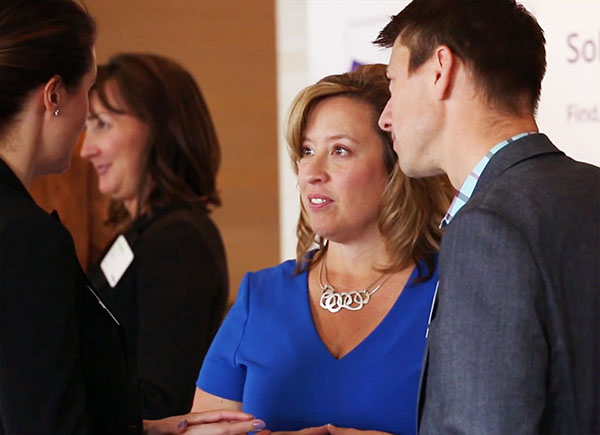
That’s still happening. The old days are here.
As a business owner, let’s say you have the gap. Your intellectual property is thin if somebody comes to look to buy you. They know because they’re going to ask you and they’ll find out. I think about the after, and you guys had the experience of going into company pre-acquisition, working through getting everything aligned and the gaps fixed and seeing the result on valuation after?
It’s remarkable results because of the cohesiveness of the culture and everyone moving in the same direction. This small little town company was $250 million when we first started working with them. They sold for $1.5 billion after a few years and it was not us, it was a team of people. They had the courage to listen to their employees and make some important changes that helped them achieve their objectives. That private equity firm was very happy and they could sell in a few years. We’re a small part of their journey, but I think an important part of their journey. They had a language with their employees and they could retain more, grow more, and train more of them to be the next generation of leaders. You need to be thinking about where’s your next best person going to come from. I can’t overemphasize. They might be sitting right next to you.
I think about training the culture where you have repeatability. If the CEO steps out, there’s somebody in their chain that can pick it up and that you have a mechanism for training the skill positions that you require internally so you don’t have to depend on the outside.
It’s not like you never have to depend on the outside. Things have changed so dramatically that we think the best person who’s out there somewhere. Let’s just look at home first and let’s see how we can grow our companies from those people who already bought into the culture.
I’m the business owner and I’m coming like, “I need a new fill in the blanks level position.” I’m going like, “There’s Joan over there and then there’s Bill over here. Do I just go outside?” If I promoted those guys, then I’m going to have to find somebody to replace them.
That’s what all your hiring managers are thinking of. Your hiring managers, they are motivated some not all, by fear. If I interview a candidate who is a rock star, they’re going to make me look bad. I’m not going to hire them. The reverse happens from a leadership perspective. “Joni’s great at being our controller. If I promote her, give her some training, then I’m going to have to find another Joni.” It’s not another Joni, it’s a function and that’s the growth of the company. How do you grow the company, grow the people and keep the culture?
That’s a perspective. I read a book by a guy named Donald Miller called Building A StoryBrand. He was talking about the congruency of the story and what you do and transmitting that through your organization. Do you see that storytelling skill set working its way back into the business community?
I hope so. I’m a storyteller and I try to be a good storyteller. I’m taking a course through Stanford. The first story we worked on was our personal stories. We worked on our company’s stories, then we worked on our user stories and then we’re working on our innovation stories. It’s so much fun to think of the story. What I do train people on and when I speak out in the communities out there is people want to know your story. When we started talking, you Bob have a remarkable story. People follow you because of who you are. Many leaders forget to tell their story. Who are they? What do they stand for? What don’t they stand for? What are their non-negotiables? We’ve got to start sharing our stories because we didn’t get here without some scraped knees.
Giving people meaningful language about who you are and what you stand for, what works and what doesn’t work helps get them through.
Even in the military, a lot of that is bulletproof and nothing bothers me. Is that a challenge with thinking about I made a mistake or might have been vulnerable at some point and not willing to expose yourself to perhaps that view?
Have you ever heard of Brené Brown? I love her. If she’s reading this, go girl. Keep telling people to be vulnerable because people want to understand our stories because so many people overcome so much every day. I wrote an article on my blog that is entitled Invisible Crosses We All Bear. I was motivated to write this because I met a gentleman who runs a nonprofit called Invisible Disabilities and so many people are walking around with invisible disabilities. You probably all just thought upon reading this. There are so many invisible disabilities that we don’t know about and we need to give people a little grace. I think there’s such a power to your journey, my journey, to those people who are following us. We have to create leaders. You went into the military. You didn’t go in and become an officer. I think you went through a little bit of training.
I trained a little bit.
I have so many mentors that I think every day when I do my daily gratitude that help me become who I am, my father, my mother, my brothers, my sisters, Ronny Mosston, Dave Mead, the list goes on and on. Who are your mentors? Who are we giving? Are we mentors to people? Dave Mead’s a friend of mine here locally. He’s creating a mentoring Colorado movement. I believe it’s the right thing to do because people are craving how did we get here?
It’s an interesting part of the reason for the show. Part of it was called the digital mentor. I think about the story, your story and other folks and you go. It’s a unique story that departs when you do by and large unless it’s recorded. After a period of time, people don’t remember. The genius on so many people is underappreciated and grit. Somewhere along the line being polite and having some level of empathy for others. Those skill sets I think aren’t transmitted well. I’ve talked to a large number of women in the workforce. Part of the objective of the show is to have an equal if I can get it that way. I was interested in talking to women that serve on boards and there are some remarkable statistics on having women included on boards, on the performance of the company and so on. It’s very remarkable and should be observed and done, adopted someplace. You were working for a staffing company at some point. You made the decision, “I want to do this myself. I want to have my own firm.” Take us back to that moment where you finally said, “I’m not doing this over here anymore. I’m going to do my own.” What was that like?
That’s a fun story. I have always been a maverick. Can you tell? I think if you talk to any of my brothers and sisters or my mom, they would tell you that and anybody who I’ve interacted with. I was an employee for many years. I’m not the easiest person to manage. One of my mentors who are good at managing me because he would come in once a month, let me go and then come back in once a month. One of the greatest gifts I’ve ever gotten was I was fired from my last job. It was a great gift because it allowed me to figure out what I wanted to do. The answer came from all those that I’ve served throughout my years. One of my clients actually locally said, “We’ve all been waiting for you to stop working for other people, so why don’t you just help me do this project?” It was a recruitment project in a particular area. I said, “I didn’t know you’re waiting for me.”
That was the beginning of me as an entrepreneur. Many people don’t talk about the fact that they’ve been fired. They hide it in darkness because they don’t want anybody to know. I’ve got to tell you, it’s the best thing that ever happened to me. I learned about myself. I learned about who I am. I learned that I am resilient. I learned that I could take care of my family. I learned that I wanted to be an entrepreneur and I wanted to create. I also learned that I wanted to have my freedom. It was very important to me. Out of that became TalenTrust. I’ve been doing that since 2003. The first couple of years from 2003 to 2009, it was a lifestyle company.
My son, who’s eighteen, was three to nine. I’ll never forget, I was sitting with one of my clients and it was going to be [3:00] soon and I had to get to the bus stop at [4:00]. I was trying to pitch a deal. It was Dan McCallum, God bless him. He’s since retired. I kept looking at the clock and I’m having a mommy moment while I’m trying to pitch a big deal to bring in a whole sales team. He goes, “What are you looking at the clock for?” I said, “I have to be real. I have a child standing on Conifer Mountain waiting for me. If I don’t get there by [4:00], lions and tigers and bears.” Dan goes, “Go, call me on the phone and we’ll finish the deal on the phone.”
That was a wonderful a-ha moment to me. The more authentic and vulnerable and real you can be. He was a very senior smart man in a steel company who you normally would say, “You don’t tell him what’s going on.” That was such a liberating moment and then we started growing from there. In 2009 when everything tanked for everybody, I was a member of Vistage International, which is a great business community. I love them. They circled around me to help me stay focused on my mission and what I was trying to achieve. I wanted to disrupt the recruitment industry and do it better. It’s not a transaction, it’s about the journey. It’s about building great companies, not butts in seats. Our company will not just give you a butt and a seat. You’ve got to make sure you build a culture that can keep them and then from there, our company grew dramatically. The company, we have about eighteen employees.
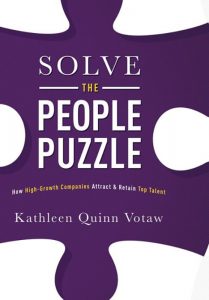
I think about solving the problem. If you can solve the problem, then the customers typically show up because they’re looking for a solution. We talk time and time again about people and we have to have an employee and this, that and the other. The reality is there’s a problem at some point that employee will address. I see it in the other businesses that I have too is you have to spend a lot of time in the understanding phase. If you’re a lousy listener, you’ve got to listen and you’ve got to ask maybe the right question and then determine if the right question makes everybody uncomfortable, then come back to it and then you can diagnose.
Listen and react. I think the first step is listening. We call it measuring. Where are you? Where’s your culture? How engaged are your people? Are they promoters or detractors? Are you paying them every week and they hate you? Are they telling people how awful you are? You should know that. I would want to know that. Work on those things that are most important to the company that you serve. The reality is we as privately held business owners, we serve our employees, we serve our customers and we serve our employees’ families. We are responsible for the way the family interacts. I heard a great speaker once and he was talking about people who spend most of their waking hours at work and we actually send them home. If they’ve had a bad day, it affects the whole family. It affects their relationship with their significant other and their children and everyone else. If they go home and they’ve had a positive outcome, it affects everything else. We have a lot of responsibility for how we serve both our external customers and our internal customers.
Both of them, if you’re serving the external customer, then they have families that are responsible for, and internally you’re responsible. Your right. It’s not the employee. It is their family, their kids, the education and the lifestyle. I don’t dwell too much on that.
It’s overwhelming.
Just do the right thing.
My brother says that all the time, “Let’s just do the right thing.” That’s our number one core value, do the right thing even if it’s hard.
At the end of the day, if you don’t know what to do, just do the right thing. It sounds simple.
It does sound simple. Even if you do the wrong thing because you think you’re doing the right thing, you did the right thing because you thought it was the right thing and you can learn from it.
You forgive yourself, forgive others and then go, “We’re going to get it again.”
If you listen to your life, it’ll give you your path.
You can always have a do-over. Every day is a do-over. Every day is an opportunity to do your best.
Before we go onto some of the other things that I was going to quiz you to death on, for you, when you start your day, what does your ritual look like?
When I start my day, it’s typically started with daily gratitude and just being grateful that I have the day. I’m a cancer survivor. I was diagnosed with thyroid cancer in December of 2000, two months after I had my child. Talking about a high low, that was a high low. That rocks your world for a good few years. I’m grateful that I am cancer-free. I’m grateful that I have now, that I can sit here and talk to you. I like to be very present and it makes me happy. I’m happy for my husband, my son, my family and all those who choose to follow me into uncertainty every day. They’re cool and our clients are cool. I tell my people all the time, it’s not life and death.
You’re not doing brain surgery.
No, we’re not. In my business, we have the opportunity to do our very best and if we don’t do our very best, we have the opportunity to fix that. I do my daily gratitude and I get prepared for my day-to-day before. That’s the way I do things, not surprising I’m sure to you. I work mock too with my hair on fire from Monday through Friday. Weekends are sacred for my family. I hold them for them. I try not to work on Saturday or Sunday. At [6:00] PM every day, I lock this lovely little thing up. I put it away in my office. I don’t continue to play on it.
I think it refreshes. It lets you go into neutral.
Be present, sit down, have a glass of wine, watch a show, read a book. Do something else other than responding to everything, which has everybody this hyper. We’re all like, “What’s happening?” It can wait.
I saw somebody comment and say we are addicted to outrage.
My husband had the news on and I walked in and I said, “Are we still talking about this?” There’s such anger. I’m not interested in talking about sides, but if we could stop with the anger, how much could we achieve?
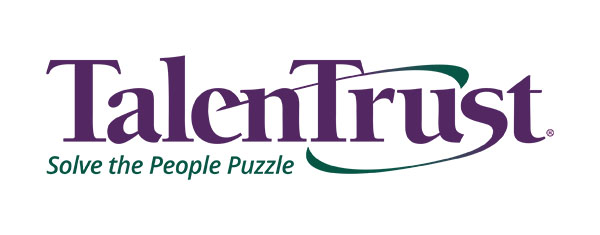
How about being polite?
Please and thank you.
Be polite. Do what your mom said for you to do.
All I ever needed to learn, I learned in kindergarten, one of my favorite books. Hold hands when you cross the street. Look both ways. Have cookies at [4:00]. I think that’s a great idea.
There’s part of that gap analysis. I’m missing a cookie.
I am over here simplifying it to a large extent, but if you go back to basics and human kindness, things get much clearer. We tend to overengineer everything. We were dealing with human beings, everything you’re doing. Let’s figure out how to be kind. A lot will be solved that way.
With that for you, what’s the highlight of your year so far? Looking back over your year.
I have many highlights. I’ll give you a professional and a personal one. Professionally in March, I was awarded the Top 25 Most Powerful Women in Colorado. I’m not powerful but that was the title. I met Kristen Blessman who’s the CEO of Colorado Women’s Chamber of Commerce. She’s growing that organization and doing a brilliant job and was helpful for absolutely no gain. Lo and behold, I get this award. Have you ever had that moment where you would come into as busy as I was working on serving my clients, serving my employees, doing whatever I do, I’m running to speaking engagements and I was getting ready for the event? I didn’t even realize what was happening. I sat down, my husband was there, some of my team were there and I’m like, “There are a thousand people here.” I sat there for a moment and went, “This is a big deal. Be present.” I have a friend, Al Colleen, who talks about being level four as much as you can, which means being in kindness, just being aware of other people more than yourself.
I sat back and I went, “I should be present for this, be aware of what’s going on and the other awardees.” It was a remarkable moment for me, my husband, my family, my child, my employees, for the company. It was a blessing. It’s nice. Personally, my son is eighteen. His name is John and he just graduated the from Conifer High School. They graduate 98% of their students and Wesley Paxton. They’re doing a great job. I love him and he graduated. It was one of those moments where you planned for it and you’re having graduation and people are coming in. When I sat in the audience, I have that moment where it was a chapter in the journey and it was remarkable and he’s on his way.
We need to bring in people who compliment who we are because in privately-held businesses, we can’t do it all.
A personal passion project, what are you working on?
I’m working on my next business called KQV Speaks. I am 53-years-old, so I need a plan.
I didn’t ask.
No, I don’t care. I’ll tell the world. KQV Speaks was founded in January of 2019. It’s a project my husband and I are working on together and we’re working on bringing my voice out to the world. The message of Solve the People Puzzle, and also I have another book in the queue that I’m working on to help people achieve what they’re trying to achieve. I have many different topics that I talk about. One is culture by design, not default. Recruitment is a sales process and unveiling that whole process to the world. The other one is #MeToo now, what do we do? I believe in men too by the way. It’s not just me too. It’s men too. It’s all of us. How are we going to move forward positively in this culture we’ve created? There shouldn’t be adversity between men and women.
We should be leading together. You stated that companies that have women on boards do better. Catalysts.org has great statistics around that and still it’s not adopted. We’ve got a gap there, there’s a big gap. I’m very excited about bringing my knowledge, my passion, my love out to the world to help everyone lift everyone up. Brené Brown is one of my heroes who are doing this and I love her quote that she starts daring greatly with about the man in the arena. Many of us are standing on the sidelines criticizing each other but it’s people like you, me, Brené and other people who are right in the middle of the arena, maybe doing things wrong sometimes. They’re doing something and they’re not sitting on the sidelines. Why don’t people get off the sidelines? I’m very passionate about that. I’m doing a lot of work about that.
I think about your journey, you kicked it into gear and talking to groups.
I’ve been speaking professionally for a few years. I did it in reverse, I think from what I hear from other people. Professional speakers, they want to be just professional speakers. I was an employee, then I started a company and somebody suggested, “You’ve got a book in there,” based on all my writings. If you go to my website, there’s a big blog with more information than you want. I wrote the book and then they’re like, “We love your book, can you speak?” I started speaking and here we go. If you listen to your life, it will give you your path, and this is my path. I’m 53 and John’s going off to college, my son, and it would be cool to have a whole other gig. I’ve got quite capable people running TalenTrust.
You have a business, not a job.
When I speak, it is a lead generation for TalenTrust. See the business model blooming before your very eyes. Also, I have fun and I love having fun. You can probably tell.
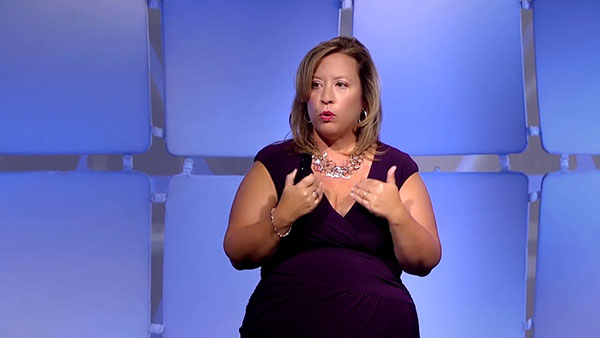
For you, have you always been a communicator?
Yes.
Public speaking was not much of a challenge for you or was it?
When I was twelve-years-old, my music teacher said, “You have a nice speaking voice. Come over here.” She played a tune and I sang the song. I’ve been amateurly, professionally singing since twelve. I think that was part of it for me. I did get my BA in Communications from Emmanuel College, which was a small little baby college in Boston in the ‘80s. ‘84 to ‘88 I was in college. I’ve always had that ability to sing in front of people, speak in front of people, never got intimidated by that. We’re all created equal but if you’re going to judge me, then shame on you. Less than 2% of the people in the universe would ever do anything public speaking or let alone singing.
How do people find you if they want to reach out to you?
Our website is TalenTrust.com. You can also reach out to me via my phone number (303) 838-3334 extension 5 is my personal phone number, but you can call anybody on the team. The website is a great way to look us up, look at our people. All of our information’s on there. It’s a great way to connect with us. I’m happy to come back and talk more about whatever you’d like to talk about.
I can’t tell you how much I appreciate you taking time. I did a little homework. I read your book. For the people that haven’t, get busy, get the book, read the book and maybe execute on some of the things that are in the book, that would be helpful.
Pick one thing. Remember, I’ve been doing this for many years. You can only do one thing at a time.
Pick one, and if you get sideways, the only mistake you can make is by not reaching out. With that, thank you so much for your time.
Thank you, Bob. I had a blast.
Important Links:
- TalenTrust
- Solve the People Puzzle: How High-Growth Companies Attract and Retain Top Talent
- Building A StoryBrand
- Invisible Crosses We All Bear
- Vistage International
- KQV Speaks
- Catalysts.org
- https://YouTu.be/4TygD-0v1Mg
- https://TalenTrust.com/
About Kathleen Quinn Votaw

Kathleen Quinn Votaw is CEO of TalenTrust, which is revolutionizing how companies find, keep, and grow great people. After nearly two decades of earning accolades in the staffing industry, Kathleen determined that traditional models don’t always serve the best interest of clients—especially rapidly growing companies. She vowed to disrupt the stagnant staffing/recruiting industry.
In 2003, Kathleen launched TalenTrust to act as a strategic partner in helping companies Solve the People Puzzle . The firm’s expert team collaborates closely with executives to identify the root causes—and often interrelated issues—behind a company’s human capital challenges. Clients of TalenTrust achieve a positive culture and attract employees who are aligned with leadership’s vision. The firm’s solutions include People Puzzle Gap Analysis, Cultural Alignment & Engagement Strategies, Assessments, Outsourced Strategic Recruitment, Compensation Analysis, Behavioral Interviewing, Onboarding, and Systems and Processes for Efficiency.
. The firm’s expert team collaborates closely with executives to identify the root causes—and often interrelated issues—behind a company’s human capital challenges. Clients of TalenTrust achieve a positive culture and attract employees who are aligned with leadership’s vision. The firm’s solutions include People Puzzle Gap Analysis, Cultural Alignment & Engagement Strategies, Assessments, Outsourced Strategic Recruitment, Compensation Analysis, Behavioral Interviewing, Onboarding, and Systems and Processes for Efficiency.
Love the show? Subscribe, rate, review, and share!
Join the Business Leaders Podcast Community today:
- businessleaderspodcast.com
- Business Leaders Facebook
- Business Leaders Twitter
- Business Leader LinkedIn
- Business Leaders YouTube
The post Building Mid-Market Private Companies Using People Puzzle Gap Analysis with Kathleen Quinn Votaw appeared first on My podcast website.